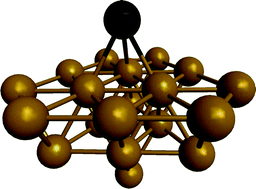Two-component relativistic density functional theory modeling of the adsorption of element 114(eka-lead) on gold
Abstract
A

* Corresponding authors
a
RRC “Kurchatov Institute”, 1, Kurchatov sq., Moscow, Russia
E-mail:
zaitsevskii@kintech.ru
b B.P. Kostantinov Petersbourg Nuclear Physics Institute, Russian Academy of Sciences, Gatchina, Leningrad district, Russia
c
Technische Universität Kaiserslautern and Forschungszentrum OPTIMAS, Erwin-Schrödinger-Straße 52, 67663 Kaiserslautern, Germany
E-mail:
vanWullen@Chemie.Uni-KL.de
d Photochemistry Center, Russian Academy of Sciences, 7a-1 Novatorov st., Moscow 117421, Russia
A

 Please wait while we load your content...
Something went wrong. Try again?
Please wait while we load your content...
Something went wrong. Try again?
A. Zaitsevskii, C. van Wüllen, E. A. Rykova and A. V. Titov, Phys. Chem. Chem. Phys., 2010, 12, 4152 DOI: 10.1039/B923875A
To request permission to reproduce material from this article, please go to the Copyright Clearance Center request page.
If you are an author contributing to an RSC publication, you do not need to request permission provided correct acknowledgement is given.
If you are the author of this article, you do not need to request permission to reproduce figures and diagrams provided correct acknowledgement is given. If you want to reproduce the whole article in a third-party publication (excluding your thesis/dissertation for which permission is not required) please go to the Copyright Clearance Center request page.
Read more about how to correctly acknowledge RSC content.
 Fetching data from CrossRef.
Fetching data from CrossRef.
This may take some time to load.
Loading related content
